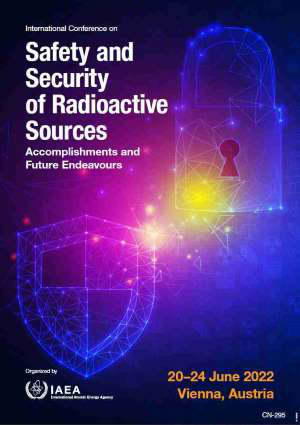Speaker
Description
Introduction
In today’s fast paced and competitive era of radiation protection, optimal allocation of budgeted expenditure poses a critical concern for facilitation of radiation safety programs worldwide. Reliable methods for budgetary planning towards sustainable radiation safety programs are crucial in order to cater for planning, establishment and maintenance of radioactive sources in facilities. Kunwoo, Tatsuhito et al [1] gave historical challenges during which time funding has fluctuated widely in some countries. The authors provide a brief overview of the current situations in education and training in this field; and conclude the urgency for funding to facilitate radiation research. In a related development, Gardner and Cormello[2] explain how technologists quality of care and radiation safety are at risk and how examination productivity can be affected. The budget negatively affect technologist’s occupational attitude and job satisfaction because of budget cuts. Rosenblatt [3] stress the importance of realistic budgetary and cost considerations in order to foster long-term planning of radiotherapy services at the national level; taking into account the regulatory infrastructure for radiation protection and sustainability aspects. In a related article by Rosano [4], policies standards and guidance that support implementation of radiation protection are given. This can help the public and environment by providing training, tools, bio data as well as operational guidelines.
In this study, we present a weighted goal programming model that can assist radiation facilities to optimally allocate funds for radioactive safety programs.
Methods
In this study, a weighted goal programming model was developed to allocate budgetary expenditure for radiation safety. The relevant cost components under consideration included stages of planning, maintenance and establishment. The weighted goal programming model proposed initially defines the objective function. The model seeks to minimize the deviation variables from actual expenditure; subject to the goal values of budgeted expenditure for radiation safety program. The sum of weighted deviations is minimized so that actual expenditure on planning, maintenance and establishment costs meets the budgeted expenditure. The simplex method is used to solve the goal programming model; and a numerical example is presented to determine the overachievement or underachievement of budgetary priorities.
Results
The results obtained from the model developed aim to provide empirical evidence and insights to decision makers and policy analysts to maintain cost effective budgetary planning towards sustainable radiation safety programs. Certain goals on planning, establishment, and maintenance can be fully, partially or not achieved at all. This however; depends upon the priority levels and cost targets set in line with budgeted expenditure of a particular radiation safety program. Results also indicate that the priority-based goal programming solution for budgetary radiation safety is more sensitive to the highest priority objective function. The significance of lower priority budgets is lower; and thus their impact on the overall result of the optimization problem is not significant.
Conclusion
The weighted goal programming approach for budgeting radiation safety programs can be effective; where relevant cost components can be prioritized if necessary. This can ensure cost effectiveness for radiation facilities; a critical path towards sustainable radiation safety programs.
References
[1] Kunwoo C, Tatsuhiko I, Dmitry K, Tatjana P,Sisko B, Antone L, Hei T, Toshiyasu I, Tetsuya O, Kazuo S, Andrzej W, Grayle E,Yutaka Y, Nobuyuki H Funding for radiation research: Past, present and future , International Journal of Radiation Biology, 19(7):2019
[2] Gardner K, Cormello R, Watta L How budget issues affect technologists Journal of medical imaging and radiation sciences, vol.45, issue 3, June 2014 ,115-118.
[3] Rosenblatt E Planning national radiotherapy services, Frontiers in oncology, 2014, 4:315
[4]Rosano D Office of Environment, Health, Safety and security, Radiation protection of the public and the environment
| Country OR Intl. Organization | Uganda |
|---|

